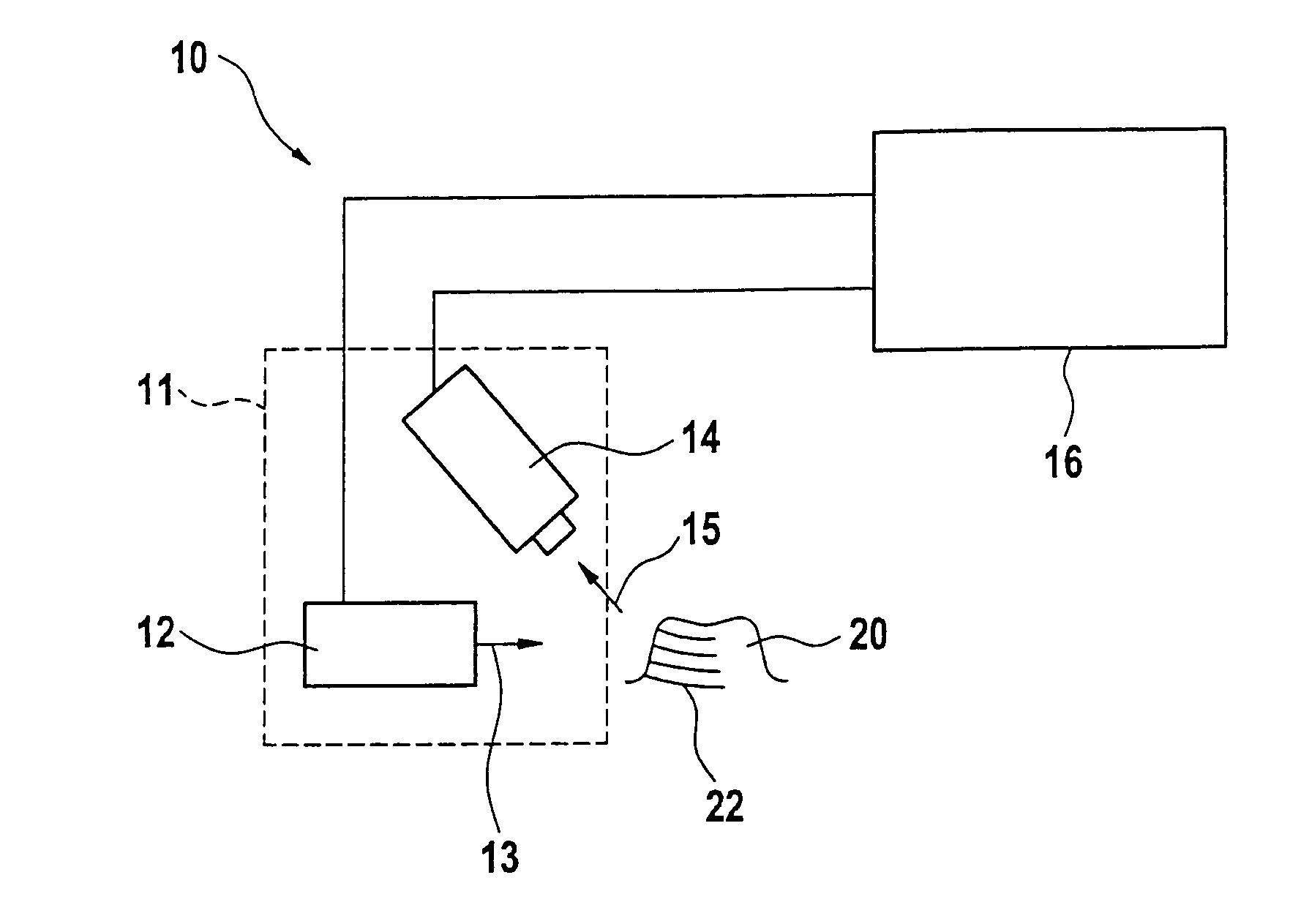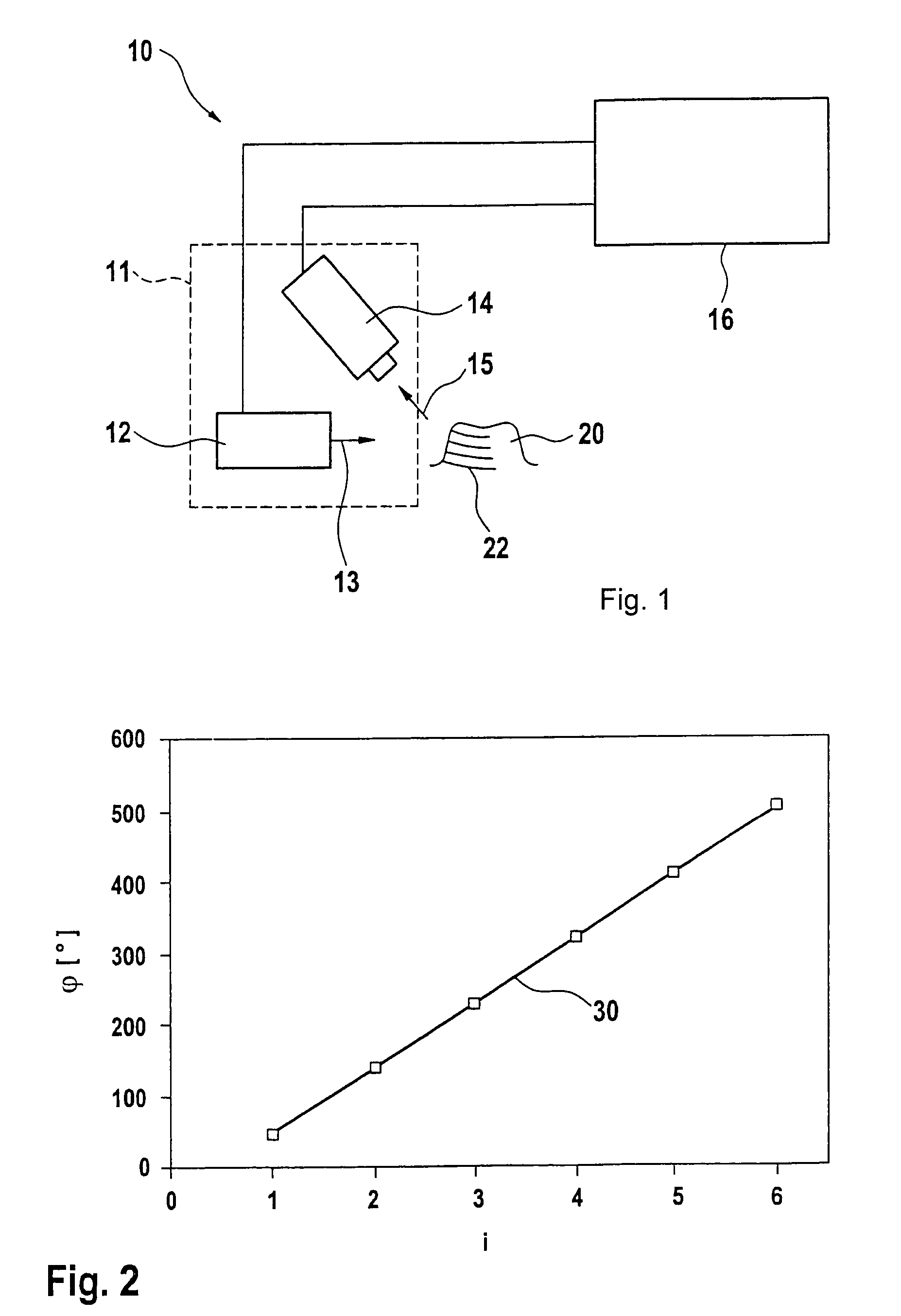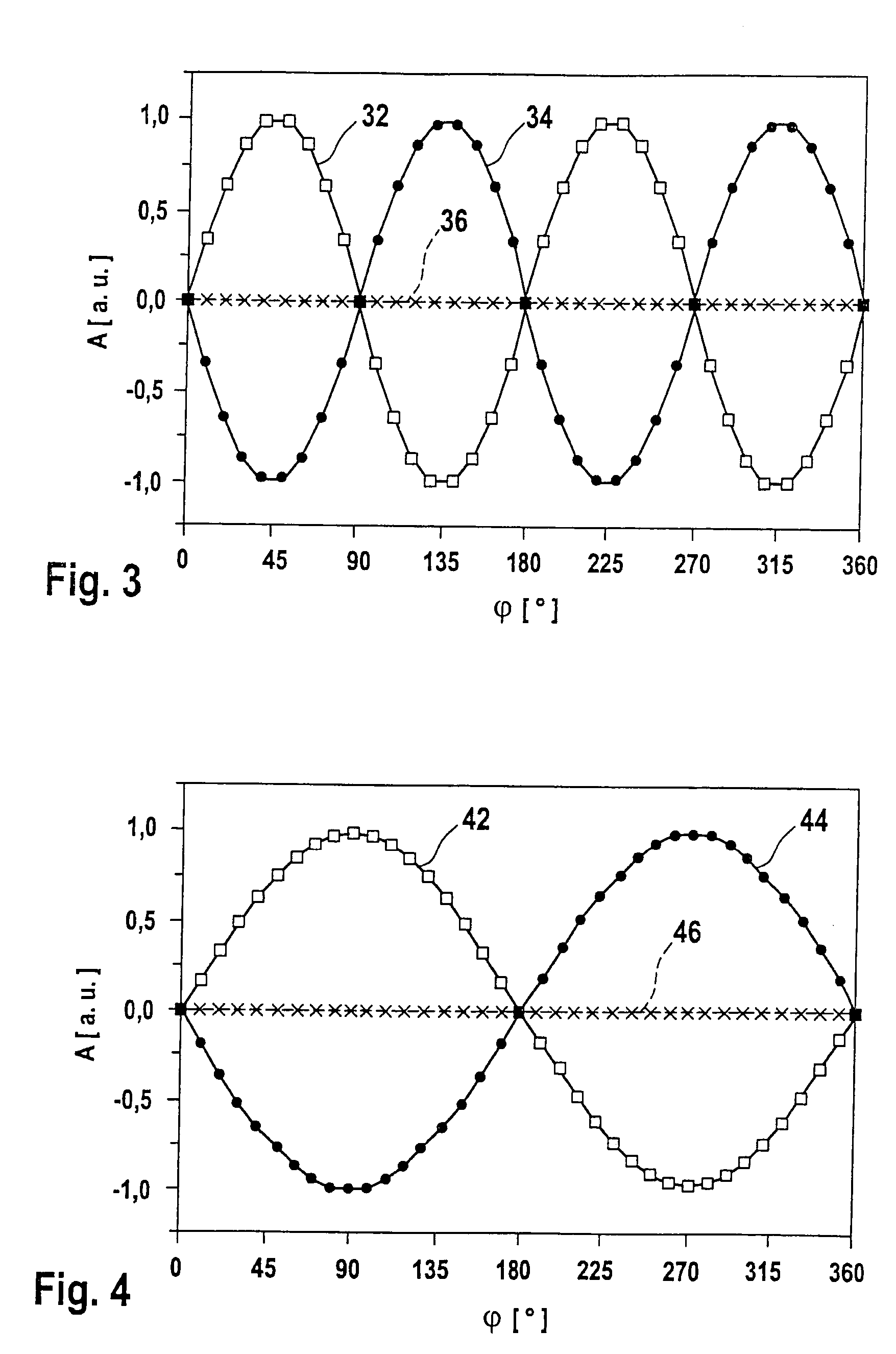Method and system for imaging an object
a technology of object image and image, applied in the field of method and system, can solve the problems of distinctly prolonged recording time, loss of resolution, and improvement of quality, and achieve the effects of improving measuring accuracy, free-hand recording, and reducing the loss of resolution
- Summary
- Abstract
- Description
- Claims
- Application Information
AI Technical Summary
Benefits of technology
Problems solved by technology
Method used
Image
Examples
Embodiment Construction
[0032]FIG. 1 is a diagrammatic representation of a recording device designated by the reference numeral 10 and adapted to operate according to the principle of phase shift triangulation. The projecting device 12 produces a grid of light having parallel grid lines projected on to an object to be imaged, in the present example a tooth 20. By reason of the three-dimensional surface texture of the tooth 20, the lines of light in the grid on the tooth appear to be bent and unevenly spaced. The image 22 projected via the projection ray trajectory 13 is recorded (videographed) at an angle of parallax by means of a two-dimensional camera 14 disposed in the trajectory of observation 15 and is passed on to an evaluation unit 16 for evaluation. The projecting device 12 and the camera 14 may be combined to form a structural unit 11, as will be later shown in FIG. 5 in the case of an intraoral camera.
[0033]After the first basic image R1 has been recorded, further basic images showing defined pha...
PUM
 Login to View More
Login to View More Abstract
Description
Claims
Application Information
 Login to View More
Login to View More - R&D
- Intellectual Property
- Life Sciences
- Materials
- Tech Scout
- Unparalleled Data Quality
- Higher Quality Content
- 60% Fewer Hallucinations
Browse by: Latest US Patents, China's latest patents, Technical Efficacy Thesaurus, Application Domain, Technology Topic, Popular Technical Reports.
© 2025 PatSnap. All rights reserved.Legal|Privacy policy|Modern Slavery Act Transparency Statement|Sitemap|About US| Contact US: help@patsnap.com



